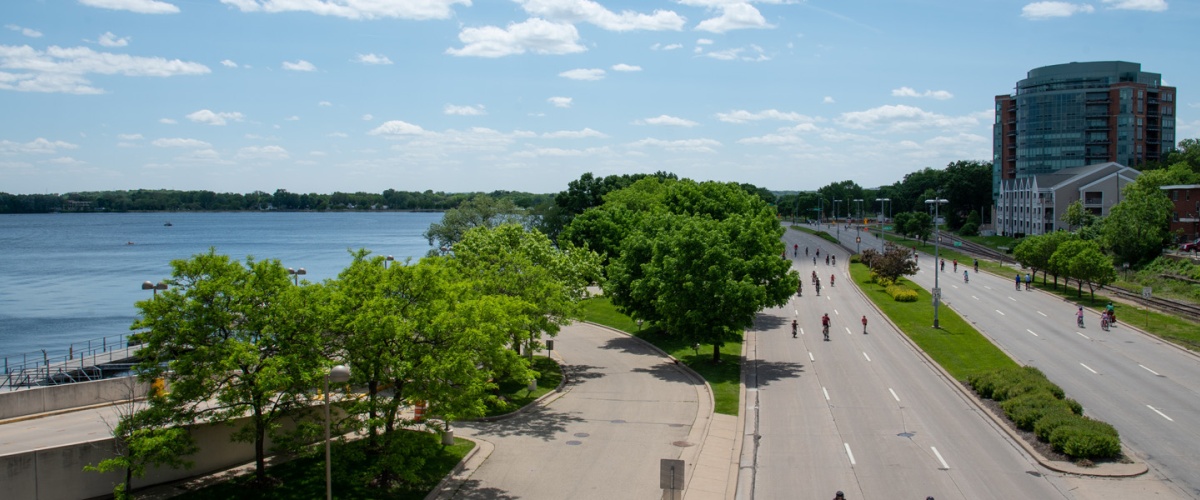
Emerald Ash Borer Confirmed in Madison
City of Madison officials received confirmation of the presence of Emerald Ash Borer (EAB) on the north side of Madison near Warner Park. As a result, Dane County will be quarantined. The quarantine prohibits some wood products from being moved out of the county to areas that are not infested.
Madison Parks Forestry officials received a call from a private tree company reporting suspected EAB infestation in a tree they were removing on private property near Warner Park. The Madison Parks forestry staff investigated the site and surrounding areas. Forestry staff sent in the evidence to the State of Wisconsin Department of Agriculture, Trade & Consumer Protection. Confirmation of EAB was received Friday, November 22, 2013.
“It is unfortunate, but expected to receive confirmation of Emerald Ash Borer in the city of Madison,” said Mayor Paul Soglin. “City staff has been working on EAB response plans for several years and we are prepared to implement our plans.”
The City of Madison has been working on its tactical response to EAB since 2008. An Emerald Ash Borer Taskforce, including representatives of Madison Parks, Forestry, Mayor’s office, City Streets Division, and City Fleet Division, was created to coordinate assessment of the EAB threat, plan various response strategies, review the latest research and act to mitigate impacts on the city’s tree canopy, ensure public safety, protect the environment and contain costs. The EAB Plan was approved by the Common Council in September 2012 and updated in September 2013.
Link to City of Madison Emerald Ash Borer Plan.
The City of Madison has an estimated 21,700 publicly owned street (terrace) ash trees, and unknown number of ash trees in parks and thousands more on private property. In the Warner Park area where EAB is confirmed, there are over 2600 publicly-owned ash trees.
The following is a summary of the City’s plans for public trees is based off the approved EAB Plan:
- Madison Parks Forestry will continue to do branch sampling in the Warner Park area to find the ‘epi-center’ of the infestation.
- Over the winter, Forestry staff will remove publicly owned ash trees (street and park trees) that are in poor condition and/or are located under power lines.
- In the spring the city will implement a chemical treatment program for trees that are in healthy condition and over 10 inches diameter. The city will use the injection treatments versus soil drench treatments to ensure the protection of ground and surface water quality.
- Madison Parks Forestry will provide an “Adopt-a-Tree” program for private citizens to help save, at their own expense, a publicly owned ash tree in a Madison park. The details on this program will be provided later in the winter as the treatment programs cannot start until spring.
- Madison Parks Forestry will continue with branch sampling in all areas of the city to look for any other infestation locations.
- Going forward, Madison Parks Forestry will replant publicly-owned trees in most locations. If people would like to help support this undertaking, a specific fund has been created with the Madison Parks Foundation. http://madisonparksfoundation.org/support-the-parks/how-to-give/
What can Homeowners do about their own privately owned trees:
- Visit these websites for detailed information:
- http://www.cityofmadison.com/parks/services/forestry/pests/EAB/toolkit.cfm
- www.emeraldashborer.wi.gov
- Keep a close watch on ash trees for signs of possible EAB infestation: thinning canopy, D-shaped holes in the bark, new branches sprouting low on the truck, cracked bark and woodpeckers pulling at the bark to get to insect larvae beneath it.
- Call a Certified Arborist for expert advice.
- If you are considering preventative treatment, the city of Madison encourages you to use the injection method rather than the soil drench method in order to protect our lakes and ground water.
As Madison officials continue to work on the Emerald Ash Borer infestation, we will keep citizens informed of any changes or discoveries. Please visit the Madison Parks Forestry EAB website: http://www.cityofmadison.com/parks/services/forestry/pests/EAB/
